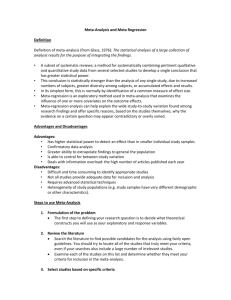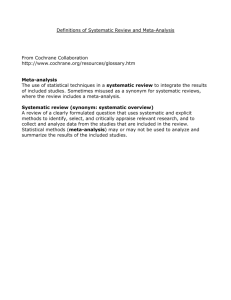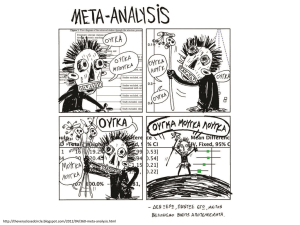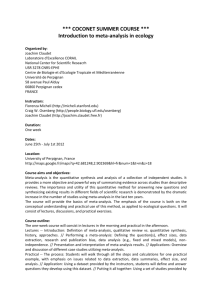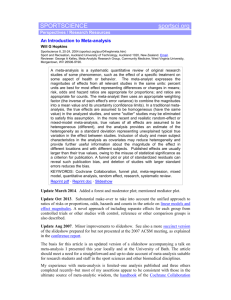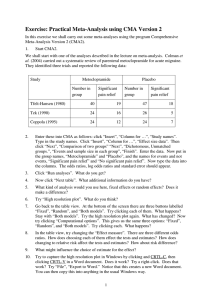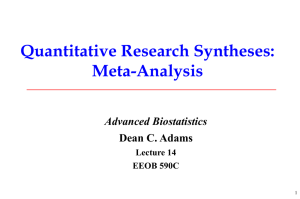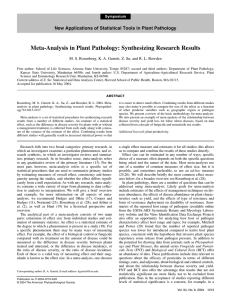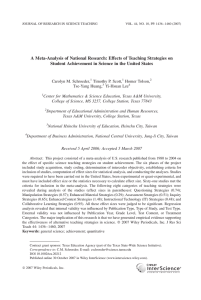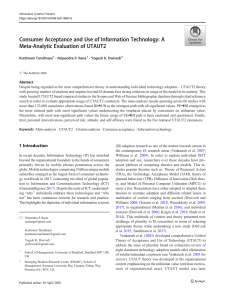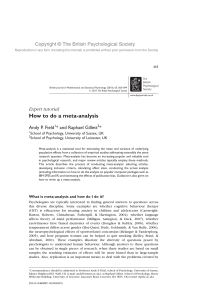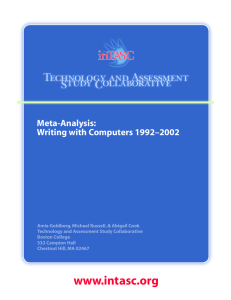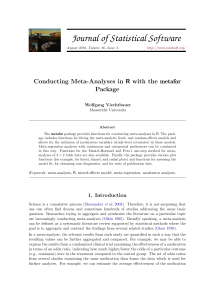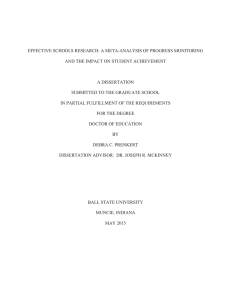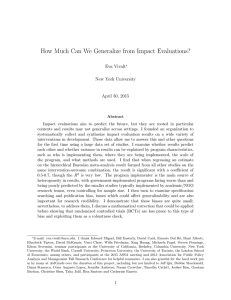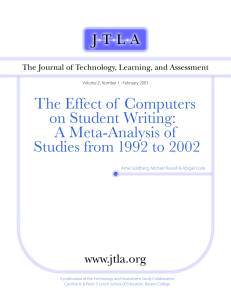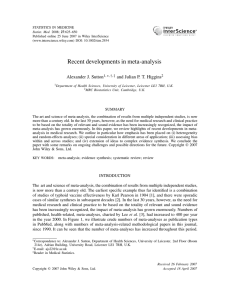Sensitivity Analysis and Meta
advertisement
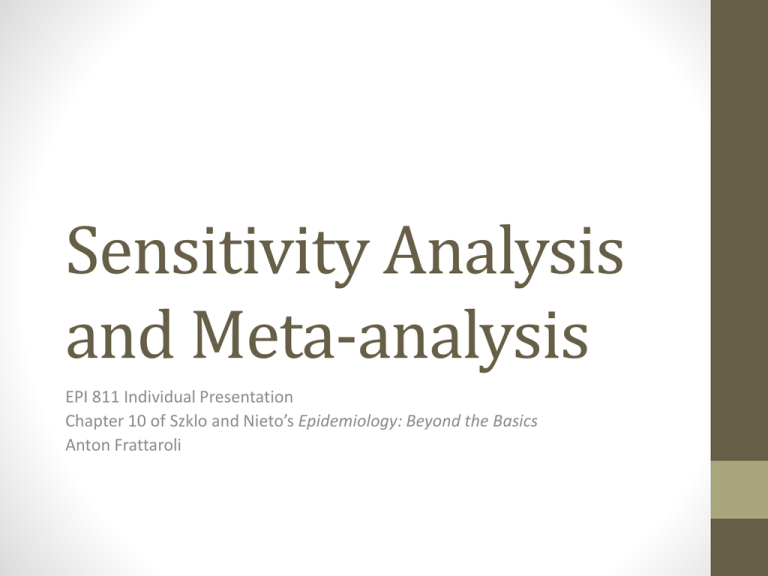
Sensitivity Analysis and Meta-analysis EPI 811 Individual Presentation Chapter 10 of Szklo and Nieto’s Epidemiology: Beyond the Basics Anton Frattaroli Sensitivity Analysis • Generally, an assessment of how systematic or random errors affect an effect estimates’ representativeness of the actual effect (the validity of the effect estimate). • Misclassification error is a primary inhibitor of validity and can be difficult to correct for. • Executed by adjusting model parameters over a reasonable range, and observing the results. Sensitivity Analysis Applied to Misclassification: Example • You: “The relative risk (RR) of coronary heart disease (CHD) for second-hand (passive) smoke exposure in non-smokers is between 1.15 and 1.3.” • They: “Maybe some of your ‘non-smokers’ are actually smokers, and your RR is too high.” • You: “I can do a sensitivity analysis. Assume 5% of my exposed ‘non-smoker’ cases are just misclassified smokers. In that case, the effect of CHD on active smokers would have to exhibit a RR of 7.0 in order to entirely account for the difference in RR. But, since the RR of CHD in smokers is 2.0, you’re wrong.” • They: “Try 10%.” STATA: episensi Sensitivity Analysis Applied to Vaccine Effectiveness: Example Meta-analysis • A “quantitative approach for systematically assessing the results of previous research in order to arrive at conclusions about the body of research (Petitti)”. • Unit of analysis is the study, rather than a group or individual. Study selection is similar to the selection of subjects in a study. • In a meta-analysis study of the relationship of major depression to socioeconomic class, only 51 studies were chosen out of a 743 found. Meta-analysis in Action! STATA: metan You can do it too! Meta-analysis Styles • Some prefer the Mantel-Haenszel method of weighting study estimate results by the power of the study (the “fixed-effects model”). • Others like a “random-effects model”, which takes into account both within-study variance and cross-study variance. • The random-effects model is more conservative. The real difference is in the generalizability: fixed-effects is limited to the included studies, while random-effects can be applied to a hypothetical “population of studies.” • Neither model is advisable when the direction of the studies is not consistent. • Still some argument about the effectiveness of meta-analysis, given the differences in participant selection and data collection methods across studies. • EPI 810 tip: Prospective meta-analysis can be used as an agreement across research groups to avoid some of these pitfalls. Questions? • Where do I get that totally sweet Stata module? • episens: http://ideas.repec.org/c/boc/bocode/s456792.html • metan: http://ideas.repec.org/c/boc/bocode/s456798.html


